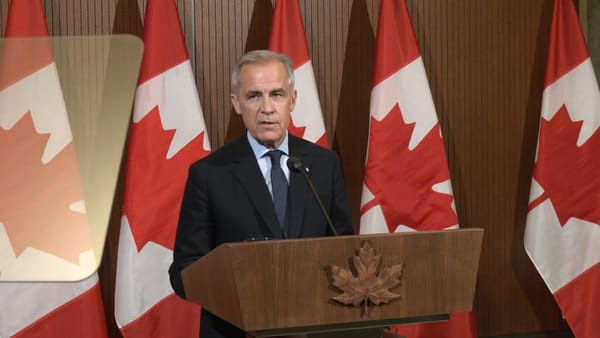The Master Strategist: How Mark Carney May Have Outmaneuvered Canadian Politics

For years, many analysts and political observers reviewed Mark Carney’s tenure as the Governor of both the Bank of Canada and the Bank of England with a skeptical eye. The fiscal results on paper were underwhelming — deficits increased, debt doubled, and questions mounted. Some dismissed him as an academic with poor real-world instincts.
But the deeper one looks, the clearer it becomes: this wasn’t incompetence. This was strategy.
In fact, what has unfolded over the past several years paints a picture of a man executing a meticulously calculated plan with almost surgical precision — a geopolitical and economic gambit that may have reshaped Canada’s political and financial future while operating largely beneath the radar.
The Carney Timeline: From Vice Chair to Power Broker
- August 2020: Mark Carney is appointed Vice Chair of Brookfield Asset Management, one of the largest asset management firms in the world.
- Fall 2020: Carney becomes an unofficial pro bono economic advisor to Prime Minister Justin Trudeau. The pro bono status is key: it exempts him from official conflict-of-interest disclosures and shields him from transparency regulations.
- November 2020: Brookfield launches Brookfield Reinsurance Partners Ltd. in Bermuda — an offshore structure with limited public scrutiny.
From this point forward, a series of critical events take place, leading to an astonishing crescendo in 2025.
Enter Political Chess: Coordinated Timelines and Strategic Moves
- May 2024: A new CFO is appointed at Brookfield. This detail seems minor — until we learn later that it’s the son of Liberal MP Chandra Arya.
- August 2024: Chandra Arya and his son, now CFO, travel unsanctioned to India for undisclosed business dealings. Canada's intelligence agency reportedly notified the government, but no action followed.
- September 4, 2024: The Liberal-NDP coalition dissolves. This critical moment threatens the Liberals’ grip on power — except for one key factor: NDP leader Jagmeet Singh must remain in Parliament until February 2025 to secure his pension.
Within five days, Carney is appointed to the Liberal Task Force on Economics — still pro bono, still exempt from disclosures — but now elevated with a platform and political proximity that enhances his influence.
Brookfield Moves to the Shadows
- September 2024: Brookfield solicits $50 billion in investment, with $36 billion proposed by the federal government.
- October 31, 2024: Brookfield announces the relocation of its headquarters to New York. This move dramatically reduces oversight by Canadian regulators and increases financial opacity.
- December 2024 – January 2025: Shareholders approve the relocation; Brookfield officially exits the Canadian business registry.
The Coup de Grâce: Political Ascent and Strategic Obfuscation
- January 16, 2025: Carney resigns from Brookfield — after successfully relocating its operations and investment portfolios offshore, beyond the reach of Canadian scrutiny. That same day, he announces his candidacy for leadership of the Liberal Party.
- January 25, 2025: Chandra Arya is disqualified from the Liberal Party for being "manifestly unfit."
- February 25, 2025: Jagmeet Singh qualifies for his pension. The final roadblock to a government transition is gone.
- March 9, 2025: Carney wins the Liberal leadership race.
- March 14, 2025: He is sworn in as Prime Minister.
And then comes the final twist.
- March 20, 2025: Chandra Arya’s revoked seat nomination is handed to Carney, giving him the necessary seat in Parliament. The man who traveled to India with Brookfield’s CFO — his own son — now ensures Carney's path is clear.
The Legal Loophole and the Timing Gambit
As Prime Minister, Carney has 60 days to disclose his financial holdings. But by calling a 36-day minimum election period, he ensures the election is completed before that disclosure is required. Meanwhile, without a parliamentary seat, his vulnerability to scrutiny is higher. By strategically acquiring Arya’s seat, he threads the needle with astonishing timing.
The brilliance lies not just in the succession of moves, but in their interlocking dependencies — each event serving as a stepping stone to the next, from 2020 through 2025.
A Final Observation: Profit, Power, and the Public Blind Spot
Mark Carney advised the government to invest in infrastructure projects that directly benefitted Brookfield — the very firm from which he would profit over the next 15 years. He met with the Chinese government in May 2024 and secured a $250 million loan in October of that same year. He relocated assets offshore and orchestrated a leadership bid timed so perfectly that even legal disclosure deadlines would be politically neutralized.
The implications are profound. Brookfield, now offshore, is not subject to Canadian disclosure laws. Its investments are hidden. The new Prime Minister, with an extensive background in global finance and intimate knowledge of those portfolios, is arguably in a position to influence domestic policy for private gain — while operating within the letter of the law.
Conclusion: Strategy Over Optics
Mark Carney has proven not to be a bungler of numbers, but perhaps one of the most shrewd, disciplined, and calculating political actors in recent Canadian history. This series of moves — some subtle, others bold — reflects a long-term strategy executed with the precision of a chess grandmaster.
While the public and political commentators debated deficits and campaign slogans, the real game may have been unfolding several layers deeper.
If true, what we’re witnessing is not just a change in leadership — it’s a masterclass in geopolitical maneuvering and the limits of democratic oversight.





